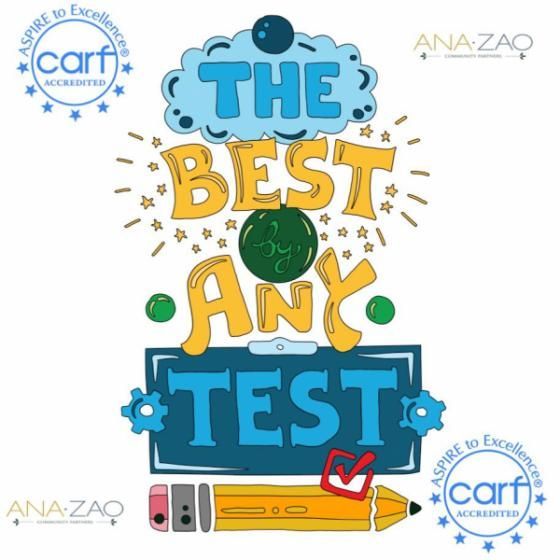Why This Matters Now
Back-to-school season can be exciting, but it can also be one of the most stressful times of year for students. The return to structure, new teachers, shifting friendships, and higher expectations can all add pressure. For some students, these challenges are manageable. For others, they can build into something much more serious.
That’s where guidance counselors play a crucial role: you’re often the first to notice when a student is struggling. Recognizing early warning signs and quickly connecting students to caring therapists can make all the difference.
According to the CDC, nearly 1 in 5 children experience a diagnosable mental health disorder during the school year, and symptoms often peak during fall and winter months when academic pressures rise and daylight decreases (National Institute of Mental Health).
For guidance counselors in Wayne and Holmes County, this reality is front and center. Spotting early warning signs of a student mental health crisis isn’t just important, it can be life-changing. That’s where trusted partners like Anazao Community Partners come in, offering timely and reliable behavioral health services for children and families.
Early Warning Signs of Student Mental Health Crisis in Ohio Schools
Guidance counselors are often the first to notice when a student’s behavior shifts. Here are some of the most common early signs to look for:
1. Academic Changes
Sudden changes in academic behavior can be concrete indicators that students are struggling with their mental health. Here are several specific examples:
- Decline in grades or sudden lack of interest in schoolwork
- Increased absences or tardiness
- Difficulty concentrating in class
2. Emotional & Behavioral Shifts
Nothing happens in a vacuum. The following shifts can indicate that students’ mental health may be suffering.
- Persistent sadness, irritability, or anger
- Withdrawal from friends or activities they once enjoyed
- Visible anxiety before school or specific classes
3. Physical Symptoms
The side effects of mental illness aren’t just emotional. Students can experience the following physical symptoms as well.
- Frequent headaches, stomachaches, or unexplained pain
- Fatigue or difficulty sleeping
- Noticeable changes in eating habits
4. Crisis-Level Red Flags
When students act in the following ways, always take these red flags seriously.
- Talking or writing about hopelessness or death
- Sudden extreme mood swings
- Self-harm behaviors or substance use
How Guidance Counselors Can Intervene Early
Recognizing signs is just the first step. When guidance counselors saw the signs at a middle school in Wayne County, their collaboration with Anazao’s School-Based Services made a noticeable difference in the lives of several teen students. Anazao taught them how to deal with their anxiety in healthy ways, have confidence in themselves and build friendships. All of this was possible because of early intervention with therapists that happened in the following small (but significant) ways.
Build Trust Through Small Conversations
Students may not open up during a formal meeting. A quick check-in in the hallway or after class can be less intimidating.
Normalize Mental Health Discussions
When teachers and guidance counselors talk openly about stress, anxiety, and seeking help, it reduces stigma for students.
Connect Families to Resources
Parents often don’t know where to turn when their child is struggling. Guidance counselors can bridge that gap by connecting them with trusted therapists.
The Role of Community Partnerships
In rural areas like Wayne and Holmes Counties, access to affordable care is a major concern. Many families rely on Medicaid, and not all providers accept it. According to the Ohio Council of Behavioral Health & Family Service Providers, rural counties report some of the highest unmet needs for behavioral health services for this reason alone.
That’s why partnerships with agencies like Anazao matter. Anazao not only accepts Medicaid but also offers fast intake, meaning students can access help quickly when stress is high and stakes are urgent. Anazao responds in a matter of days when it matters most.
Practical Tools for Guidance Counselors
Here are a few actionable steps you can take right now:
- Create a Referral Folder: Keep Anazao’s referral form, phone number (330-264-9597), and printed resources in one place.
- Develop a Check-In Schedule: Identify students at higher risk and schedule short, regular touchpoints.
- Collaborate with Teachers: Teachers see daily changes in behavior; encourage them to share observations early.
- Promote Mental Health Literacy: Post information in hallways or newsletters so students know support is available.
People with Heart: Anazao’s Unique Approach
What makes Anazao different isn’t just the services, it’s the people. Therapists and Community Care Workers see themselves as responsive, collaborative, and reliable partners. They don’t just provide therapy; they walk alongside families through each stage of life.
You Don’t Have to Do This Alone
As a guidance counselor, you carry a lot on your shoulders. The good news? You’re not alone in this work. Recognizing early warning signs of a student's mental health crisis is the first step. The next step is connecting families to caring therapists.
Anazao Community Partners is here to help, offering affordable, accessible, and timely behavioral health services for children in Wayne and Holmes Counties.
Refer a student today.





